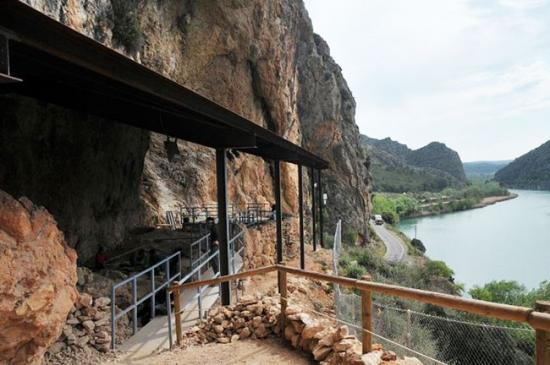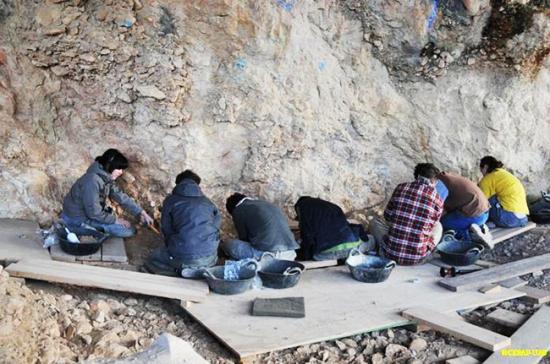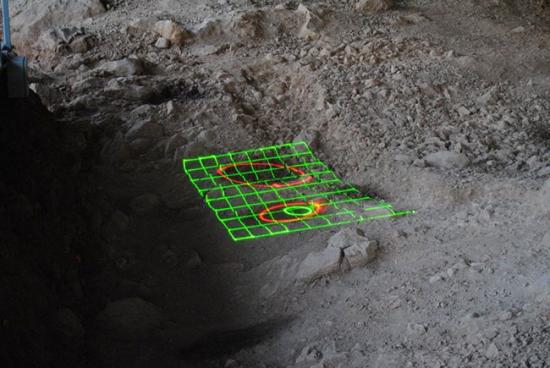Source - http://popular-archaeology.com/issue/december-2012/article/research-team-investigates-demise-of-neanderthals-in-spain

View from Roca dels Bous. Courtesy CEPAP-UAB
La Roca dels Bous, a Paleolithic site located near the southeastern Pyrenees of Spain, has been cited by archaeologists as a key location with Neanderthal-related remains that may shed light on the changes that may have contributed to the demise of the Neanderthals in Europe. Now, a team led by Dr. Rafael Mora of the University Autonomous of Barcelona will be returning to the site in 2013 to excavate and explore lithicassemblages, fossil bone, and other remains that may date as far back as 50,000 BP. The excavations may help research efforts focused on constructing a better understanding of the factors that may have contributed to the decline and eventual disappearance of humanity's most closely related extinct human species.
The project, part of the European project POCTEFA, combines the efforts of the University Autonomous of Barcelona, ArchaeoBarcelona and resources from three countries -- France, Spain and Andorra -- and will employ innovative digital technology for collecting, organizing and storing data, in part through hand-held tablet devices. In this way a large body of information can be more efficiently and accurately collected and then more easily used for analysis and reporting of finds. The results should also provide a valuable reference for further study by researchers and students worldwide. "It is the first archaeologicalsite in Spain that has been turned into a museum exhibition with digital technology", reports the team leadership. "Using an iPad you can take an interactive tour through videos, photos and 3D applications. Furthermore, the exact location of the findings is mapped via laser triangulation to provide an unparalleled experience."[1]

View of the La Roca dels Bous site. Courtesy CEPAP-UAB

Excavators at work at the site. The project is recruiting interested individuals to help with the excavations. See project website link below. Courtesy CEPAP-UAB

Project staff and volunteers use innovative technology to record and collect precise data on the features and finds of La Rocadels Bous. Courtesy CEPAP-UAB
Previous work at the site has yielded evidence of changes over time in the raw materials used by the Neanderthals at the site, such as that used in the manufacture of stone tools. These changes have raised questions and provided possible clues to changes in mobility and other behaviors that may have been effected by climate shifts or other environmental and cultural factors. More specifically, research has detected changes in the transport and type of raw materials between cultural levels at the site where significant lithic assemblages and other associated finds exist. The analysis has revealed differences in the intensity of site occupation, as well as changes in the material and manufacturing techniques, such as knapping methods and retouched tools. This technical variability has thus opened a window for scientists in understanding the strategies the Neanderthals used to acquire, produce, use and discard stone tools, especially as it applies during this crucial time period prior to their extinction.
The team directorship hopes that the upcoming excavations will help elucidate a clearer picture of the dynamics that were taking place among the Neanderthals at the end of the Pleistocene.
Says Mora, et. al.: "50,000 years ago, the Pre-Pyrenees were inhabited by sedentary groups ofNeantherthals and Homo sapiens......This project explores the dramatic changes in the socialorganization and subsistence during the Paleolithic that led to the demise of the species." [1]
More information about the project and how individuals may participate can be found at the project website.
[1] http://www.archaeobarcelona.com/home/index.php/en/overview